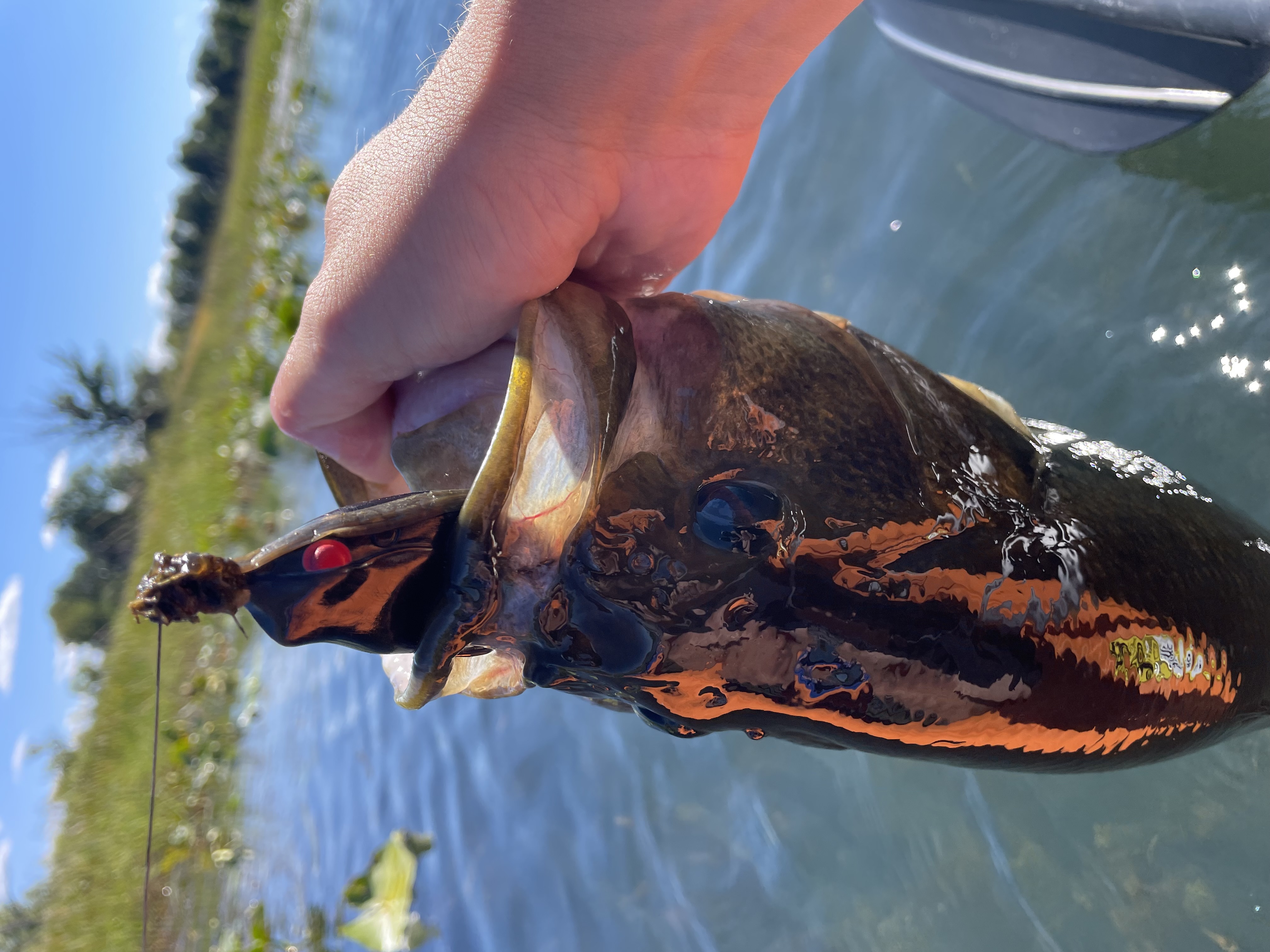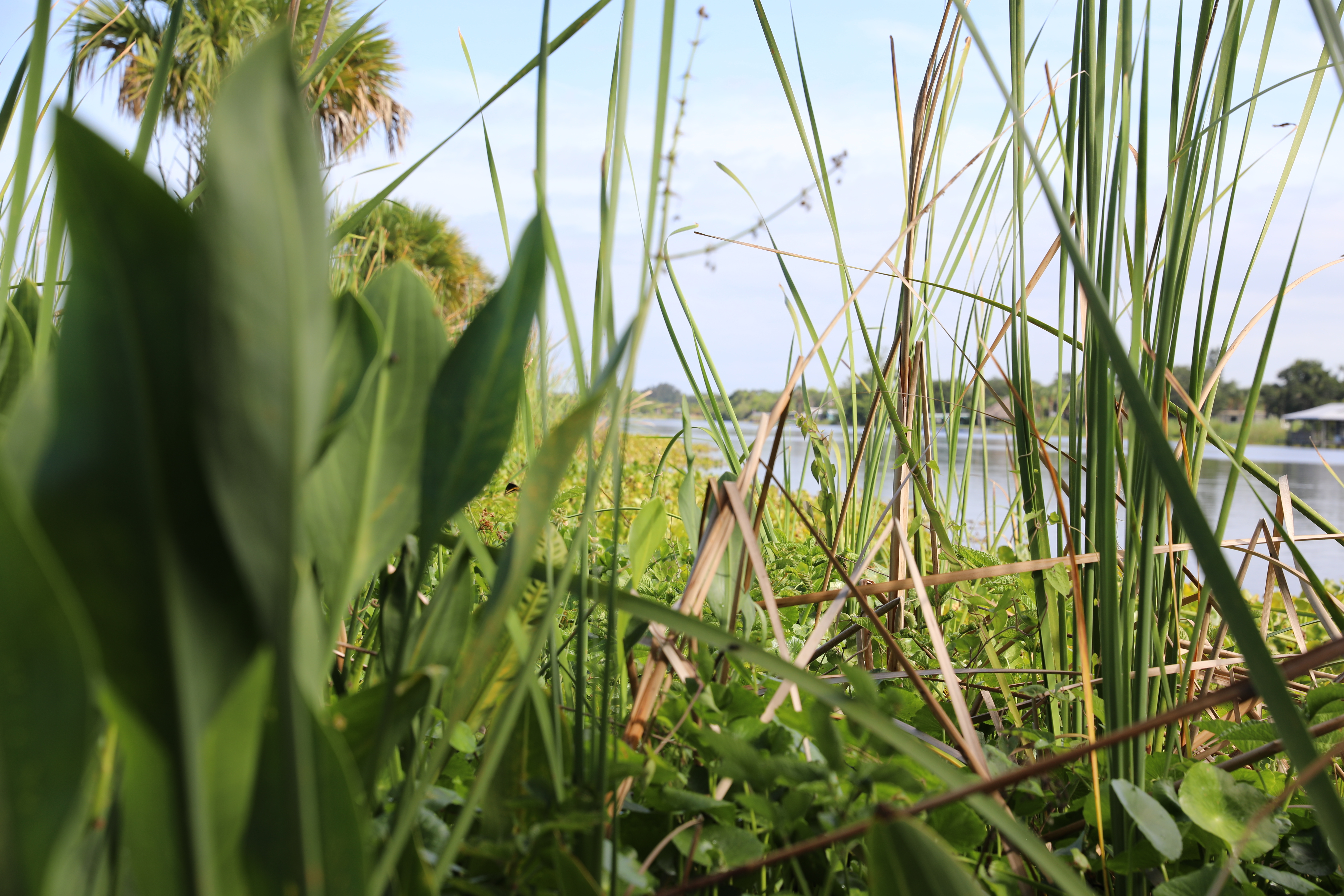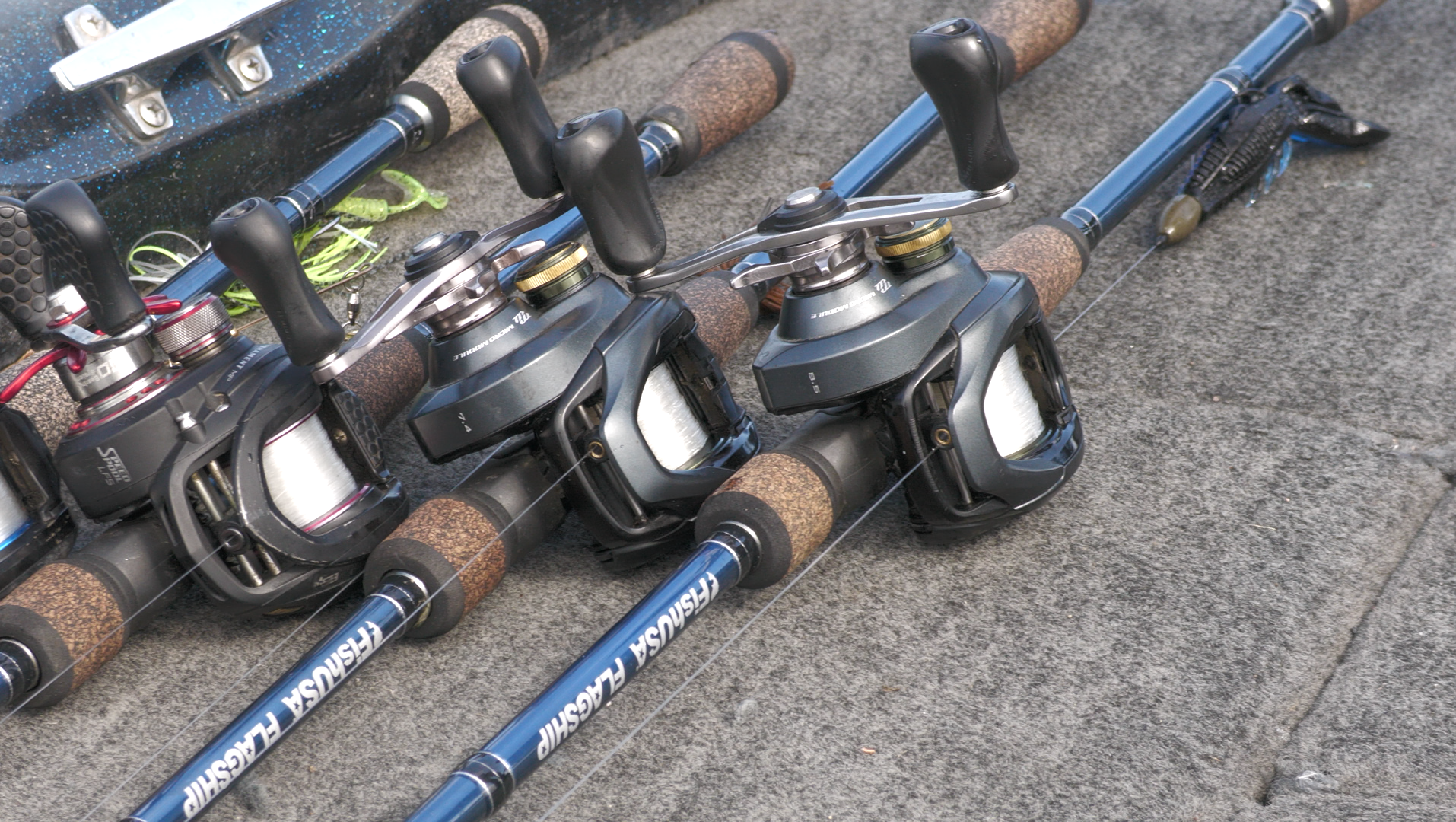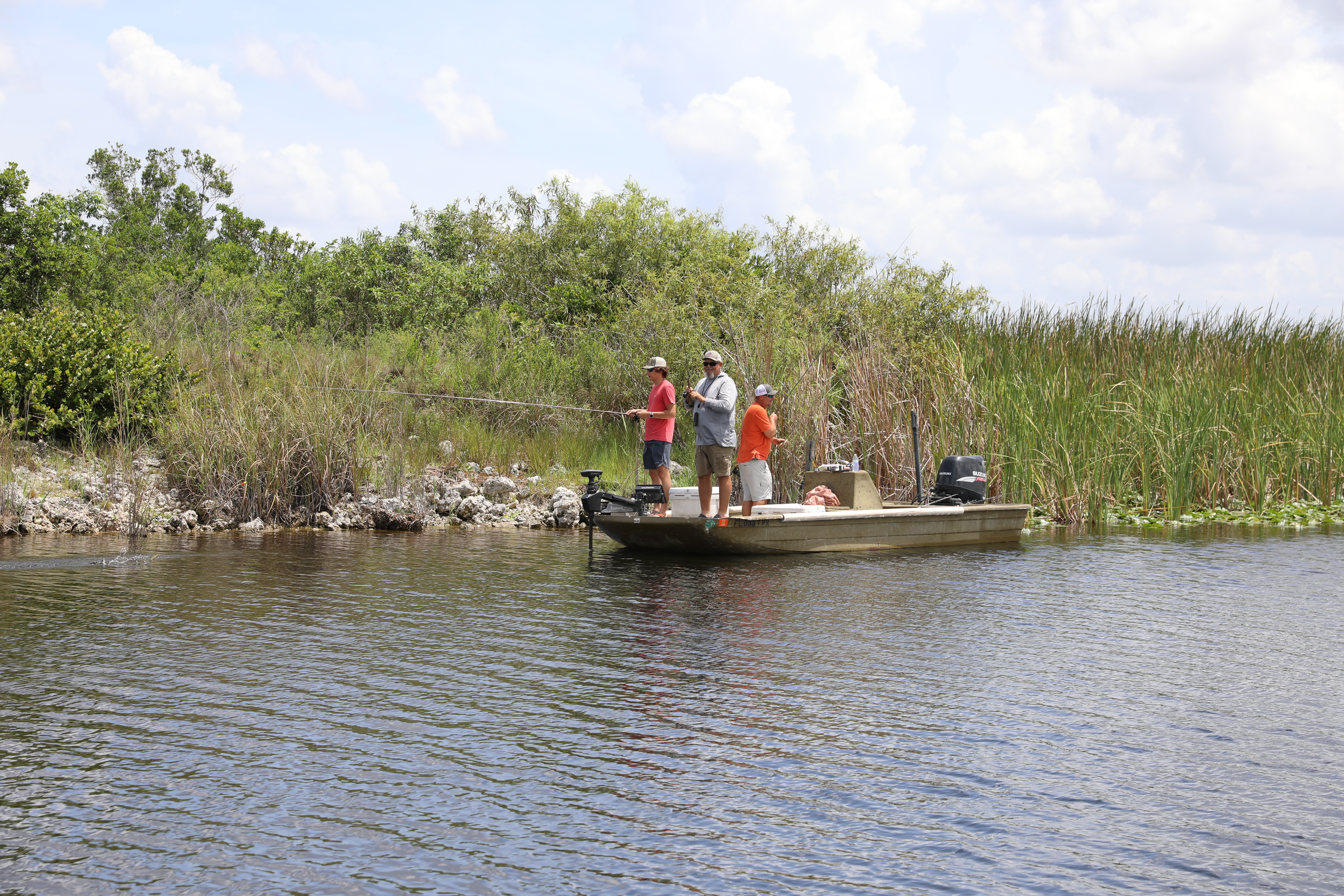Lake Okeechobee Fishing: The Ultimate Guide
By: FishUSA Staff
September 5, 2025
Spanning over 730 square miles, Lake Okeechobee—known simply as “The Big O”—is the largest freshwater lake in Florida and one of the most famous bass fisheries in the world. With endless expanses of hydrilla, lily pads, and reeds, plus thriving populations of largemouth bass, crappie, bluegill, and catfish, it’s a year-round fishing paradise. This guide covers everything you need to know: seasonal patterns, proven tactics, prime fishing spots, and on-the-water tips from experienced anglers.
Spanning over 730 square miles, Lake Okeechobee—known simply as “The Big O”—is the largest freshwater lake in Florida and one of the most famous bass fisheries in the world. With endless expanses of hydrilla, lily pads, and reeds, plus thriving populations of largemouth bass, crappie, bluegill, and catfish, it’s a year-round fishing paradise. This guide covers everything you need to know: seasonal patterns, proven tactics, prime fishing spots, and on-the-water tips from experienced anglers.
Table of Contents
Why Fish Lake Okeechobee?
Lake Okeechobee is legendary for trophy largemouth bass and consistently produces double-digit fish. Its vast shallow waters, nutrient-rich vegetation, and long growing season create ideal conditions for bass to thrive. Beyond bass, Okeechobee is a crappie (speckled perch) hotspot and also supports strong populations of bluegill and catfish. The lake’s sheer size and diversity of habitat mean there’s always a bite to be found, no matter the season.
Best Fish to Catch in Lake Okeechobee
Largemouth Bass
Largemouth bass are the main attraction at Lake Okeechobee and the reason anglers from all over the world make the trip to Florida. The Big O consistently produces trophy-class fish, with double-digit bass caught every season. The lake’s shallow, vegetation-filled environment offers perfect spawning habitat and abundant forage, which keeps the fish healthy and aggressive. Whether you’re flipping reeds with heavy gear, frogging pads at sunrise, or drifting wild shiners, bass fishing at Okeechobee is unmatched for both numbers and size.
Learn more: Lake Okeechobee Bass Fishing: Pro Tips, Hotspots & Seasonal Guide
Crappie (Speckled Perch)
Crappie, locally called “specks,” are almost as famous on Okeechobee as bass. Winter and early spring bring massive schools into the lake’s vegetation and canal systems, where spider rigging and drifting minnows put limits in the boat fast. Many anglers specifically plan January and February trips just for the crappie run. The Rim Canal, Harney Pond, and The Shoal are well-known crappie hotspots, and Okeechobee regularly produces slabs in the 2-pound class.
Learn more: Lake Okeechobee Crappie Fishing: Hotspots, Gear & Tactics
Bluegill & Shellcracker
Bluegill and redear sunfish (shellcracker) thrive in Okeechobee’s fertile waters. These panfish provide excellent action during late spring and summer when they bed in shallow water around vegetation, sandy pockets, and reed lines. Light spinning tackle, live crickets, or small worms are all you need for fast-paced fun. These species are popular not only for their fight but also for their table quality, making them a family favorite for both kids and experienced anglers alike.
Catfish
Lake Okeechobee also supports healthy populations of catfish, with channel cats being the most common. They can be caught year-round using cut bait, chicken liver, or worms fished along bottom structure and canal edges. While not as glamorous as trophy bass, catfish offer reliable action and make for great eating. Night fishing is especially productive during the warmer months, with some anglers filling coolers in just a few hours.
When to Fish Lake Okeechobee (Month-by-Month)
Lake Okeechobee is a true year-round fishery. If you’re hesitant to plan a trip because you think a certain season might be slow, don’t be — the fish will be biting twelve months a year. What changes are the patterns, locations, and presentations that consistently produce. Adapt those, and you’ll catch bass, crappie, and panfish no matter when you go.
When it comes to the very best time of year, late winter through spring is unmatched. This is when largemouth bass move shallow to spawn, putting trophy-class fish within reach along the lake’s reed heads, pad fields, and shallow grass flats. During the pre-spawn, they’re aggressive and feeding heavily, which creates incredible opportunities for both artificial lures and live shiners. Once they lock on beds, sight-fishing becomes a favorite tactic for many anglers.
Summertime fishing can be more challenging due to high heat and fluctuating water levels, but it’s still entirely possible to catch bass all day if you adjust your approach. The best strategy is to start early when topwaters and moving baits shine, then transition to flipping heavy mats or fishing offshore structure as the sun climbs. Ledges, drop-offs, and holes in the grass hold bass when temperatures rise, and focusing on shady areas, current, or wind-blown edges often pays off. Night fishing is also a great way to avoid the summer heat and find active fish.
- January–February: Pre-spawn bass push into reed heads and pad fields. Crappie fishing peaks with limits common.
- March–April: Peak spawning months. Sight-fish for giant bass in protected bays. Bluegill and shellcracker begin bedding.
- May–June: Post-spawn feeding kicks in. Topwaters and swim jigs shine early; panfish bedding bites heat up later in the day.
- July–August: Summer heat pushes bass under thick mats. Punching and frogging are the go-to tactics, and night fishing can be excellent.
- September–October: Cooling weather brings bass shallow again. Crankbaits, chatterbaits, and topwaters excel along grass edges.
- November–December: Bass school on outside grass lines, and lipless cranks and jerkbaits are effective. Crappie action heats up in canals and near grass beds.
Proven Techniques & Rigs
Flipping & Pitching
Heavy braid, stout rods, and compact plastics are essential for punching thick mats of hydrilla, hyacinth, and pads. This is the bread-and-butter tactic for big bass during summer and midday heat.
Topwater Frogging
Few things compare to the explosion of a bass crushing a topwater frog over matted vegetation. Best during low-light hours and overcast days.
Moving Baits
Chatterbaits, spinnerbaits, and lipless crankbaits are excellent for covering water, especially in pre-spawn and fall transitions.
Live Bait
Wild shiners are the top choice for trophy bass on Okeechobee. Many guides rely on them for clients targeting double-digit fish.
Crappie Tactics
Spider rigging with minnows, vertical jigging, or long-line trolling are all effective for filling coolers with specks.

Top Fishing Spots on Lake Okeechobee
Harney Pond & Monkey Box
Classic Okeechobee hotspots with dense reeds, pads, and hydrilla. Excellent during the spawn when bass push shallow. Crappie anglers also do well here drifting minnows.
South Bay
A mix of eelgrass, hydrilla, and reed heads. Top spot for flipping and frogging. Shad spawns in spring create great morning bites along grass edges.
Indian Prairie & Tin House Cove
Productive areas with a blend of shallow cover and offshore grass lines. Excellent for moving baits in fall and spring.
Kissimmee River Mouth
Where current meets lake, bass stack on grass points and shell bars. Best for crankbaits, swimbaits, and Carolina rigs.
Rim Canal
A backup when wind muddies the main lake. Provides steady action for bass, crappie, and panfish, especially in tough conditions.
Okeechobee (City Ramp Area)
The city of Okeechobee’s public access points on the north shore offer reliable fishing for both bass and crappie. The area features a mix of canals, reeds, and grass edges that fish well in almost every season. It’s also one of the most accessible areas for bank anglers.
Clewiston
Known as the “Bass Capital of the World,” Clewiston provides some of the best launching access and quick runs to productive water. The Clewiston Channel, rim canal intersections, and surrounding grass flats consistently hold bass. It’s a favorite starting point for both guides and tournament anglers.
Bay Bottom
This broad, shallow area is lined with grass edges and isolated pad fields that attract bass year-round. Bay Bottom is especially strong during the spawn when bass push into the shallows. Work soft plastics and frogs through scattered cover for explosive bites.
The Shoal
The Shoal on the northwestern side of the lake is a hotspot for both largemouth and crappie. Its vast hydrilla beds and open water structure are perfect for drifting minnows or working swimbaits and chatterbaits along grass edges. Early mornings in spring and fall can be exceptional here.
Fisheating Creek
Flowing into the northwest side of the lake, Fisheating Creek is a prime area during high water. Bass stack where creek current meets lake vegetation, and flipping jigs or fishing spinnerbaits along the edges can be extremely productive. It’s also a top spot for crappie when water conditions are right.

Best Gear for Okeechobee
Lake Okeechobee is a diverse fishery where you might be flipping a 10-pound bass out of heavy reeds one day and filling a cooler with panfish the next. Matching your gear to the target species and habitat is the key to success. Here’s a breakdown of setups that consistently work on the Big O.
Bass Fishing Gear
For largemouth bass — especially the trophy-class fish Okeechobee is known for — you need heavy-duty gear capable of handling thick vegetation and powerful runs.
- Rods: 7’6”–8’ heavy-power rods with fast action for flipping and punching; 7’–7’3” medium-heavy rods for chatterbaits, spinnerbaits, and topwater lures; medium spinning rods for finesse presentations in open water.
Shop Bass Casting Rods & Bass Spinning Rods - Reels: High-speed baitcasting reels (7.1:1 or faster) for flipping and moving baits; 3000-size spinning reels for drop-shotting or finesse rigs.
Shop Baitcasting Reels - Line: 50–65 lb braided line for punching mats, frogging, and flipping reeds; 15–20 lb fluorocarbon for chatterbaits and Texas rigs; 12–15 lb monofilament for topwater walking baits.
- Go-To Lures: Hollow-body frogs, Texas-rigged creature baits, swim jigs, chatterbaits, lipless crankbaits, and wild shiners (live bait) for trophy bass.

Panfish (Crappie, Bluegill, Shellcracker) Gear
Panfish fishing at Okeechobee is light-tackle fun, perfect for filling the cooler or introducing kids to fishing. The gear is simple but effective.
- Rods: 9–12 ft light to medium-light rods for spider rigging crappie; 6’–7’ ultralight spinning rods for casting jigs or fishing live bait for bluegill.
- Reels: Small spinning reels spooled with 4–6 lb line work well for all panfish applications.
- Line: 4–6 lb monofilament is the standard for panfish; some anglers use fluorocarbon for jigging crappie in clear water.
- Go-To Baits: Live minnows under slip floats or spider rigs for crappie; live crickets or red worms for bluegill and shellcracker; small jigs (1/32–1/16 oz) tipped with soft plastics for both.

Catfish Gear
Catfish are abundant in Okeechobee, and while they don’t require specialized equipment, slightly heavier tackle makes handling bigger channel cats much easier.
- Rods: 7–8’ medium-heavy rods with moderate action for bottom fishing.
- Reels: Spinning or baitcasting reels with solid drag systems, capable of holding 12–20 lb test.
- Line: 12–20 lb monofilament or fluorocarbon is plenty for most Okeechobee cats. Braided line can also be used when fishing near heavy cover.
- Go-To Baits: Cut bait, chicken liver, stink baits, and nightcrawlers fished on the bottom with slip sinker rigs or simple Carolina rigs.
Guides vs. DIY Fishing
Hiring a local guide is the fastest way to learn Okeechobee’s patterns. Most guides use wild shiners for trophy bass trips, but many also specialize in artificial lures for experienced anglers. DIY anglers with their own boats should study maps, watch water levels, and focus on protected areas when winds get strong.
Weather, Water Levels & Safety
Because Okeechobee is shallow and massive, wind can quickly turn conditions dangerous. Even a 15 mph wind can make the open lake treacherous. Water levels fluctuate seasonally, which affects access to backwaters and spawning areas. Always check conditions before launching and carry safety gear.
Licenses & Regulations
Quick FAQs
What is the best month to fish Okeechobee for trophy bass?
January through March is prime time for double-digit largemouth during the pre-spawn and spawn.
Can I fish Okeechobee from shore?
Yes, the Rim Canal and certain access points provide bank fishing opportunities, but a boat opens up the lake’s true potential.
Do guides guarantee big bass?
No guide can guarantee a trophy, but using live shiners in the right season dramatically increases your odds.
Can I keep some of my catch?
Yes, you can keep both bass and panfish from Lake Okeechobee, but limits and size restrictions apply. Many anglers practice catch-and-release for trophy largemouth to preserve the fishery.
How many Largemouth Bass can I keep?
The statewide Florida regulation is 5 bass per angler per day, but only one of those may be over 16 inches in length. Always check for special regulations before fishing.
How many Crappie can I keep?
Crappie (speckled perch) have a generous statewide daily bag limit of 25 per person, but always confirm local rules as they can change based on lake conditions.
Where can I check the local regulations?
The Florida Fish and Wildlife Conservation Commission (FWC) provides up-to-date information on bag limits, size restrictions, and seasonal changes. Visit myfwc.com for the latest rules.
Do I need a license to fish Lake Okeechobee?
Yes. A valid Florida freshwater fishing license is required for anglers aged 16 and older. Short-term, annual, and lifetime licenses are available online through the FWC.
Final Thoughts
Lake Okeechobee is a bucket-list destination for any angler. Whether you’re flipping heavy mats in South Bay, chasing pre-spawn giants in Harney Pond, or drifting for crappie in the Rim Canal, the Big O delivers fishing experiences unlike anywhere else. Come prepared with the right gear, respect the lake’s power, and you might just land the bass of a lifetime.
Shop Bait & Tackle

